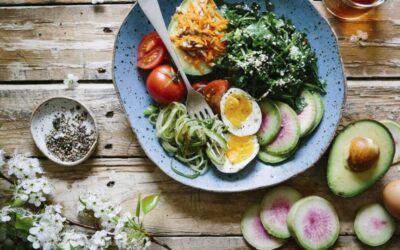Vitamin C, also known as ascorbic acid, is one of the key nutrients essential for maintaining our body’s health. This powerful antioxidant plays a vital role in supporting the immune system, collagen synthesis, and iron absorption. However, vitamin C during heat treatment is highly sensitive and easily destroyed, making it one of the most vulnerable nutrients when cooking or processing food.
In this article, we’ll look at how different cooking methods affect the vitamin C content in foods. Understanding these processes will help you retain as much of this valuable vitamin as possible in your diet. We’ll discuss which cooking methods are the most gentle and provide practical tips on how to minimize vitamin C loss during food preparation.
Having a basic understanding of the “culinary chemistry” of vitamin C will not only help you preserve the nutritional value of foods, but also ensure your body gets the necessary amount of this essential nutrient.
Vitamin C in fruits and vegetables is present in the form of ascorbic acid—an organic compound that acts as a powerful antioxidant and plays an important role in human health.
Ascorbic acid is found in varying concentrations across different plant-based foods.
Some of the richest sources of vitamin C include:
- Rosehip (up to 1250 mg per 100 g)
- Black currant (around 181 mg per 100 g)
- Red bell pepper (100–250 mg per 100 g)
- Kiwi (80–100 mg per 100 g)
- Broccoli (115 mg per 100 g)
- Parsley (around 133 mg per 100 g)
It’s important to note that the vitamin C content may vary depending on the:
- variety,
- growing conditions,
- ripeness,
- and storage method of the product.
Heat treatment can significantly reduce vitamin C levels, so for maximum retention, it’s best to consume fruits and vegetables fresh or with minimal heat exposure.
Vitamin C Loss During Heat Treatment:
Vitamin C losses during heat treatment are significant and depend on the cooking method and type of food:
1. General Losses:
- Vitamin C starts to break down actively at temperatures above 70°C (158°F).
- The longer and hotter the cooking process, the greater the loss.
2. Loss During Boiling:
- Potatoes: 30–50% loss depending on the starting water temperature
- Cabbage: up to 90%
- Cauliflower: over 80% (from 73 mg/100 g to 6.7 mg/100 g)
- Broccoli: about 80% (from 85 mg/100 g to 10.4 mg/100 g)
3. Loss During Other Cooking Methods:
- Stewed cabbage: up to 50–70%
- Blanched cauliflower: around 70%
- Blanched broccoli: around 73%
- Blanched red pepper: 20%
- Blanched green pepper: 40%
4. Loss During Freezing:
- Red pepper: 35% loss
- Green pepper: 46% loss
- Broccoli: 68% loss
- Cauliflower: 70% loss
How to Minimize Vitamin C Loss:
To reduce vitamin C loss, opt for short heat treatments at lower temperatures, such as steaming or blanching briefly. These gentle cooking methods help preserve this heat-sensitive nutrient better than boiling or frying.






0 Comments